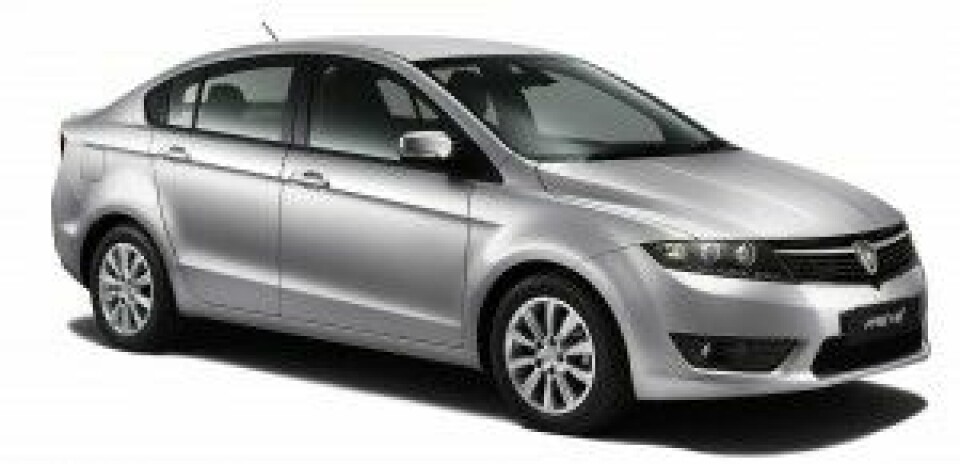Supply chain risk and reward for Malaysia
Global carmakers and suppliers are investing more in Southeast Asia, eyeing a growing middle class in Indonesia, a developed production hub in Thailand, and low-cost opportunities in countries such as Vietnam. Toyota, Honda and General Motors have increased production across the region, particularly in Thailand, while GM will open a plant next year in Indonesia. Ford, which also has a production base in Thailand, recently opened dealerships in Myanmar.
Malaysia and Singapore are the most developed economies in the region and while Malaysian passenger and commercial vehicle sales were nearly 628,000 units in 2012, it has missed out on much foreign investment compared to Thailand and Indonesia.

State backing for Proton has helped it retain strong market share in Malaysia
Part of the reason is that the market is highly protected. Although it has eliminated most tariffs for ASEAN countries, high excise duties and taxes on cars and components limit foreign production and make vehicles there among the world’s most expensive.
State backing for the country’s two local brands, Perodua and Proton, has helped them to control more than 50% of the market. Toyota is third at 16.8%, while Nissan and Honda have less than 6% each.
Breaking down barriers
However, plans to fully liberalise the Asian Economic Community (AEC) by 2015 could dramatically change demand and supply for the Malaysian automotive industry, according to Javad Feizabadi, director of academic research at the Malaysia Institute for Supply Chain Innovation, an affiliate of the MIT Center for Transportation.
The AEC plans to lift financial and physical barriers by 2016 between the ten member countries (Brunei, Burma, Cambodia, Indonesia, Laos, Malaysia, Philippines, Singapore, Thailand and Vietnam). Feizabadi said that carmakers and tier suppliers in Malaysia would see their potential market increase from 26m consumers in Malaysia to more than 600m across the AEC, including 300m in Indonesia. He predicted that access to this market would increase R&D investment and economies of scale among Malaysian manufacturers for vehicles, production and aftermarket parts.
The supply network could also be transformed. The sector is largely local, although Feizabadi said complex parts such as powertrain are imported, while some interior and exterior parts are exported. But the AEC will open up the supply chain to more competition from Thailand, and low-cost countries such as Vietnam and Indonesia.
Feizabadi said this expansion risks increasing supply chain disruptions and logistics cost, pointing to poor infrastructure in Indonesia, Vietnam and even Thailand, and to the high risk of natural disasters. While Malaysia and Singapore currently benefit from strong links for global shipping, Feizabadi said that short-sea shipping for containers and ro-ro in Southeast Asia needs further development.
Malaysia’s own logistics could be an advantage for OEMs over other markets. The country has a lower risk of flooding and earthquakes than other ASEAN countries and it ranks 29th in the World Bank’s logistics performance index, the second best in the region after Singapore (which ranks first globally).
However, the cost of moving material and vehicles into or out of other countries will be a new management challenge for Malaysian OEMs and increase their supply chain costs. “The physical cost of the AEC will be very high for the Malaysian automotive industry, as it will need to keep higher levels of safety inventory and pay more for transportation,” said Feizabadi. “The transactional cost of the supply chain will be higher too, as many countries in ASEAN have poor IT links and it will be difficult to communicate with suppliers.”
A huge market for logistics
Despite this, Feizabadi said there was a real opportunity for global logistics providers and shipping lines to invest in services linking AEC countries. With the Myanmar market opening up, there is even a chance to link Malaysia and Thailand to India and China by road. “Gaining road access will be a cheap way to connect to big markets like China and India, and will be cheaper for those countries to export [to Southeast Asia] as well,” he said.
While Thailand has a head start, Feizabadi predicted that Malaysia could expand its export markets and supply base, particularly to serve Indonesia. Given the need for Malaysian OEMs to mitigate supply chain risks and cost, demand should also rise for advanced logistics services.
“I think there will be a lot of opportunity for Malaysia and Thailand,” said Feizabadi. “It depends on how they prepare for it, but [the AEC] will create a huge market.”





